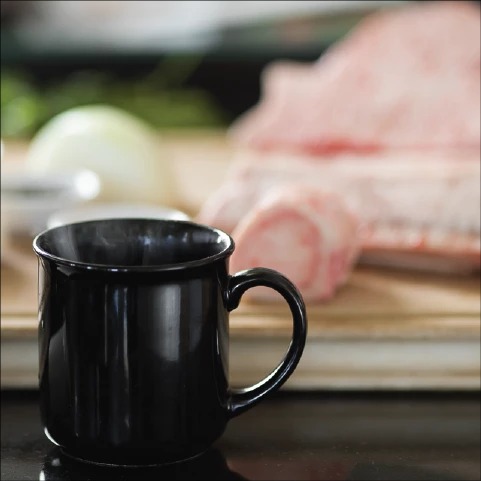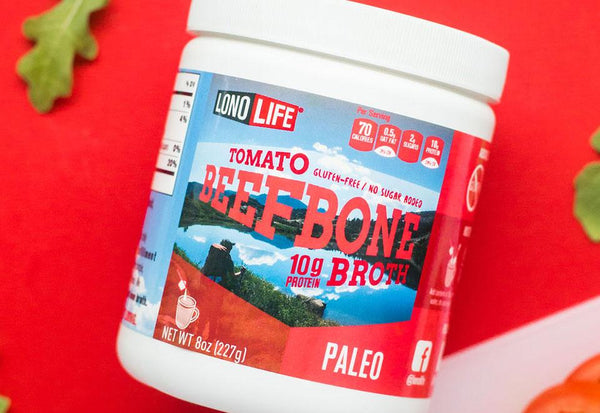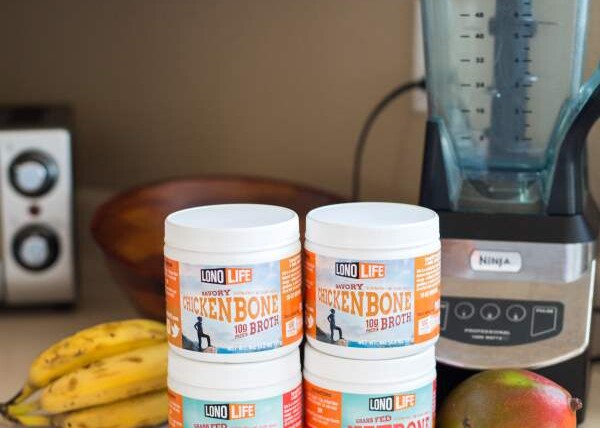What’s the difference between bone broth and stock? Let’s start with the ingredients…
What passes these days as bone broth is shocking.
Nay, criminal!
While we hope the FTC (Federal Trade Commission) eventually passes guidelines for bone broth claims, here’s some of the most egregious forms of false bone broth advertising:
- Artificial meat-flavored broth containing the neurotoxin, MSG (monosodium glutamate)
- Freeze-dried soup mix
- Canned broth with BPA lining
- Bouillon cubes with synthetic ingredients
But usually, the biggest bone broth lie is when a soup stock is labeled as bone broth.
What’s the difference between bone broth and stock?
Let’s start with the ingredients.
Real bone broth contains animal parts that you wouldn’t normally eat. We’re talking, of course, bones. But also joint components like ligaments and tendons. Even the soft, fatty bits of the bones better known as marrow. Bone broth can even include the skin (in the case of a cow, it’s called the “hide”).
Bone broth also contains vegetables and spices and herbs.
By comparison, soup stock also contains vegetables, spices and herbs. Stock also might contain some meat, even some bones, but not the other animal parts.
The other big difference between real bone broth and soup stock is cooking time.
Typically, soup stock only simmers for a few hours. As for traditional, tried and true bone broth, it takes at least 24 hours of cooking time. Some bone broths even simmer for up to 48 hours (like ours).
That bone broth includes the whole animal and cooks for longer is the reason it’s far superior in health than soup stock.
And here’s why:
The much longer cooking time of bone broth allows the animal parts you normally wouldn’t eat on their own to release some incredible nutrients. Chief among these healing compounds is collagen. Not only does the chicken or cow contain collagen, so do you. In fact, collagen is your most abundant protein in your body. It’s in your skin, hair, teeth, joints, bones and more. It provides structure to almost your whole body.
However, as you get older your body’s collagen degenerates by as much as 1-2% per year. That’s why bone broth is crucial for graceful aging. By consuming collagen from cow or chicken, you are helping regenerate your own collagen.
Soup stock, because of its short cooking time, does not contain collagen. To be sure, if it does contain some collagen, it’s very minimal and likely won’t help reform your own collagen. Furthermore, soup stock does not contain all the animal parts bone broth contains. This means that even if soup stock was cooked for longer you still wouldn’t get as much collagen as you would from bone broth. That’s because bone broth contains ligaments, tendons, cartilage, etc.
Although it might be weird to wrap your head around this fact, if you want healthier joints, the traditional way of doing so is consuming the long-simmered joints of animals. In other words, collagen from animals leach into the bone broth only because it simmers for so long. This results in the collagen being easy to absorb and digest.
Here’s another important difference between traditional bone broth and soup stock. Bone broth contains more vitamins, minerals, amino acids and other vital health-promoting nutrients per serving than soup stock. For example, bone broth contains chondroitin and glucosamine, both of which are critical for curbing inflammation and joint pain.
There are so many health benefits from eating real bone broth. Way more than gussied-up soup stock that tries to pass off as bone broth.
All the health benefits from bone broth are too numerous to mention right now. We’ll cover specific benefits in future blog posts.
But suffice to say that hopefully after reading this you won’t be fooled.
Bone broth should contain grass-fed bones (in the case of beef bone broth) or pasture-raised chicken bones (and necks, feet, etc.). It should also contain all-natural vegetables and spices and herbs.


























